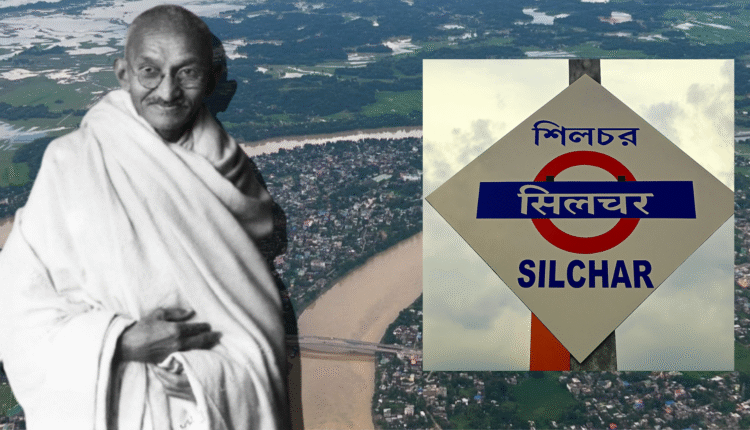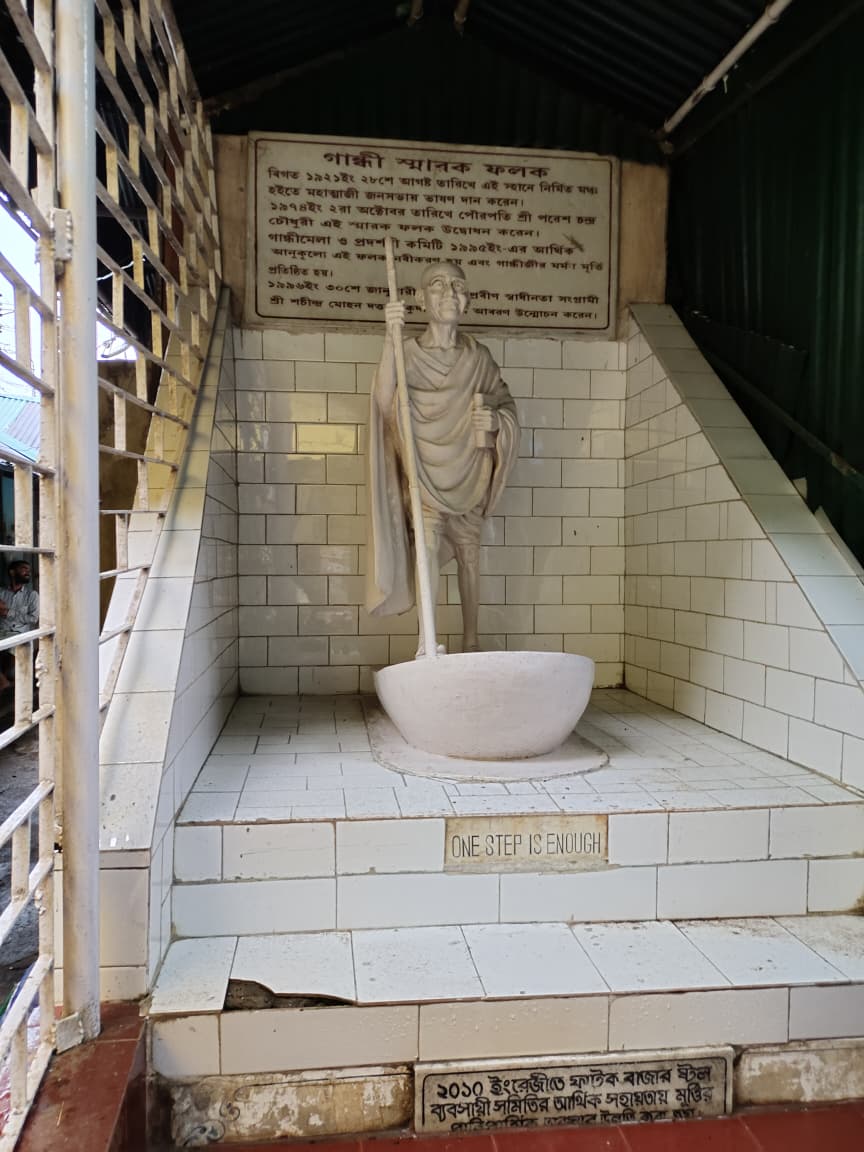
104 Years of Mahatma Gandhi’s Historic Visit to Silchar
Today (August 28, 2025) marks 104 years since Mahatma Gandhi, the cornerstone of peace and non-violence, visited Silchar during the peak of India’s freedom struggle. His two-day stay on August 27 and 28, 1921, left an indelible imprint on the social and political fabric of the Barak Valley, inspiring not only the nationalist movement but also igniting a new chapter in women’s participation and cultural awakening in the region. Gandhi ji came here to spread the message of Civil Disobedience, which was linked with the Khilafat Movement as well.
To what extent Silchar remembers his visit is a question. Is it limited only to Gandhi Mela, Gandhi Bagh and Bhawan, or do we remember his ideals and principles?
The Arrival of the Mahatma
Gandhi arrived by train at 10 PM on August 27, 1921, travelling from Lumding to Badarpur, where he addressed a gathering, before reaching Silchar. Despite the late hour, thousands had gathered at every station to greet him. In Silchar, he was received at the residence of Kamini Kumar Chanda at Goalapatty (now Ukilpatty). In Chanda’s absence, his young son Arun Kumar Chanda (A.K. Chanda), then just 22 years old, welcomed Gandhi and his entourage.
Among those who accompanied him were Maulana Mohammad Ali, his wife Begum Mohammad Ali, Seth Jamunalal Bajaj, Maulana Azad Sobhani, and Krishna Das, the author of Seven Months with Mahatma Gandhi (1932), which provides a written record of Gandhi’s stay in Silchar.
The Historic Fatak Bazar Meeting
On August 28, Gandhi addressed a massive gathering at Fatak Bazar, where a raised platform had been set up. Historian Debabrata Dutta noted that Gandhi’s speech, delivered in Hindi, was calm and devoid of fiery rhetoric, yet each word carried weight. In contrast, Mohammad Ali’s electrifying speech shook the crowd when he declared that the clothes worn by Hindus were stitched from cowhide and those of Muslims from pigskin. The crowd, moved by this imagery, tore off their British-made garments and burnt them in a symbolic act of defiance (Barak’er Itihash o Oitijyer Sandhan-e by Late Advocate Imad Uddin Bulbul).

Eyewitness Kaliprasanna Bhattacharjee, in his memoir Silchar-er Korcha, recalled attending the meeting as a young boy. He vividly remembered Gandhi’s frail figure chewing something from a small tin box, and the charismatic presence of Shaukat Ali, who snipped pieces of dhotis with scissors to symbolise the boycott of Manchester cloth. For the child observer, Shaukat Ali’s energy and brilliance left a stronger impression than Gandhi’s simplicity, showing how differently the Mahatma was perceived by contemporaries.
A Turning Point for Women
One of the most profound legacies of Gandhi’s visit was the beginning of women’s participation in public life in the Barak Valley. Until then, women were mostly confined to homes during political gatherings, often listening from behind bamboo screens, as during Bipin Chandra Pal’s 1906 visit. But when Gandhi came to Silchar, women stepped into the streets for the first time to see him.
His saint-like attire, humility, and image as a near-divine figure gave him unprecedented acceptance in conservative society. Nirod Kumar Gupta, in Swadhinata Sangramer Smriti, recounts how women even showered flower petals on him from boats during his Sylhet visit, as one would for a deity. The women’s magazine Bijoyini, founded in Silchar in 1940 and named by Rabindranath Tagore, later reflected on how Gandhi’s visit had transformed the environment for women’s movements in the valley.
Legacy in Memory and Culture
After the Fatak Bazar meeting, Gandhi visited the National School (Swadeshi School, now DNNK Girls’ High School in Club Road), where he spun the charkha on the veranda. The charkha remains preserved to this day. In cultural memory too, Gandhi’s presence resonated. As researcher Amalendu Bhattacharjee notes, several folk songs were composed about him, such as the popular dhamail line:
“Gandhi boro luk go sakhi, Gandhi boro luk go sakhi
Gandhi rajay dise shorok jol bhorite sukh…”
Such songs, sung mostly by women, reflected the depth of reverence and the transformative role of Gandhi’s visit in the region.
Gandhi as a Deity in Silchar
For many in Silchar, Gandhi was more than a leader—he was a divine figure. Businessman Vishun Lala, who built the Annapurna Temple at Edgar Ganj (now Annapurna Ghat) and installed alongside the goddess a marble statue of Gandhi, depicting him with folded hands. Vishnu Lala’s 1950 will records the installation of this statue with equal devotion as that of traditional deities (Barak’er Itihash o Oitijyer Sandhan-e by Late Advocate Imad Uddin Bulbul). The statue was relocated from the temple during the last Silchar Floods.
This unique blending of spirituality and politics remains a striking symbol of how Gandhi was elevated to the status of a Mahatma in Silchar.
As we mark 104 years since Gandhi’s visit to Silchar, it is clear that those two days in August 1921 were more than a fleeting political stop — they reshaped the region’s nationalist fervour, opened doors for women in public life, and embedded Gandhi in the cultural and spiritual consciousness of the Barak Valley. His presence here was not only a political moment but a transformative one, remembered through memoirs, monuments, songs, and the living traditions of Silchar.
Credits:
- Barak’er Itihash o Oitijyer Sandhan-e by Late Advocate Imad Uddin Bulbul
- Silchar-er Korcha by Kaliprashanna Bhattacharjee (Silchar Book Distributors, 2002)
- Powerhouse of information that is Prof. Amalendu Bhattacharjee



Comments are closed.